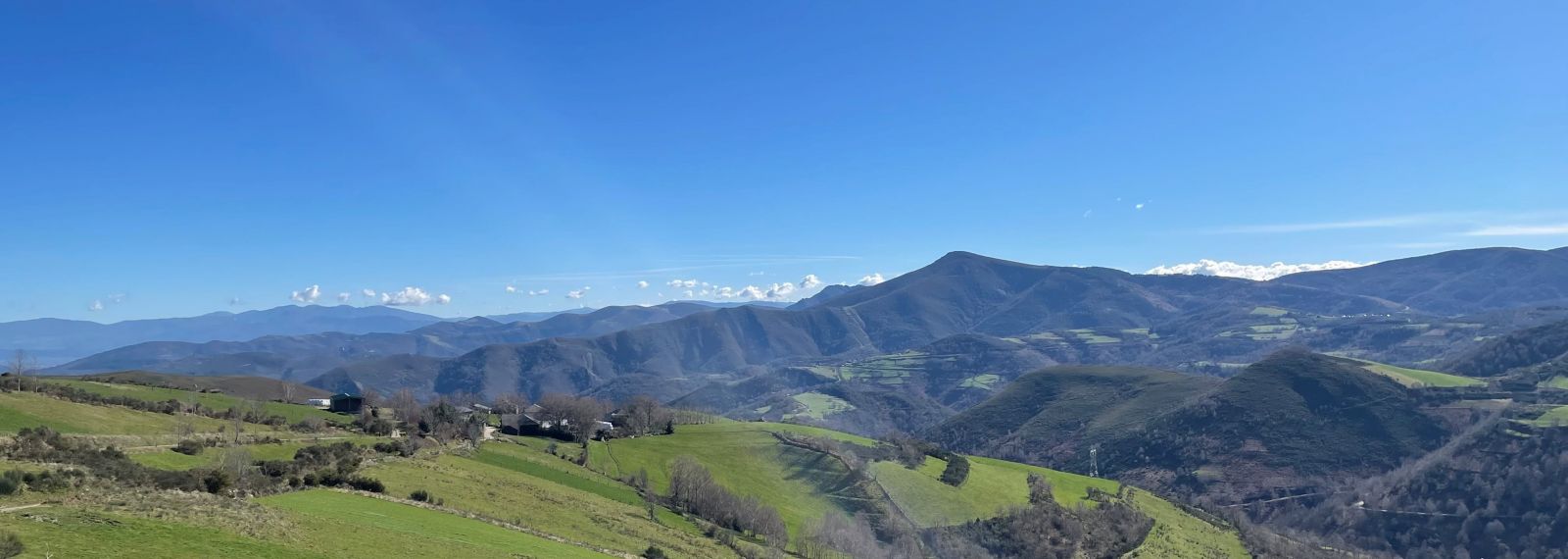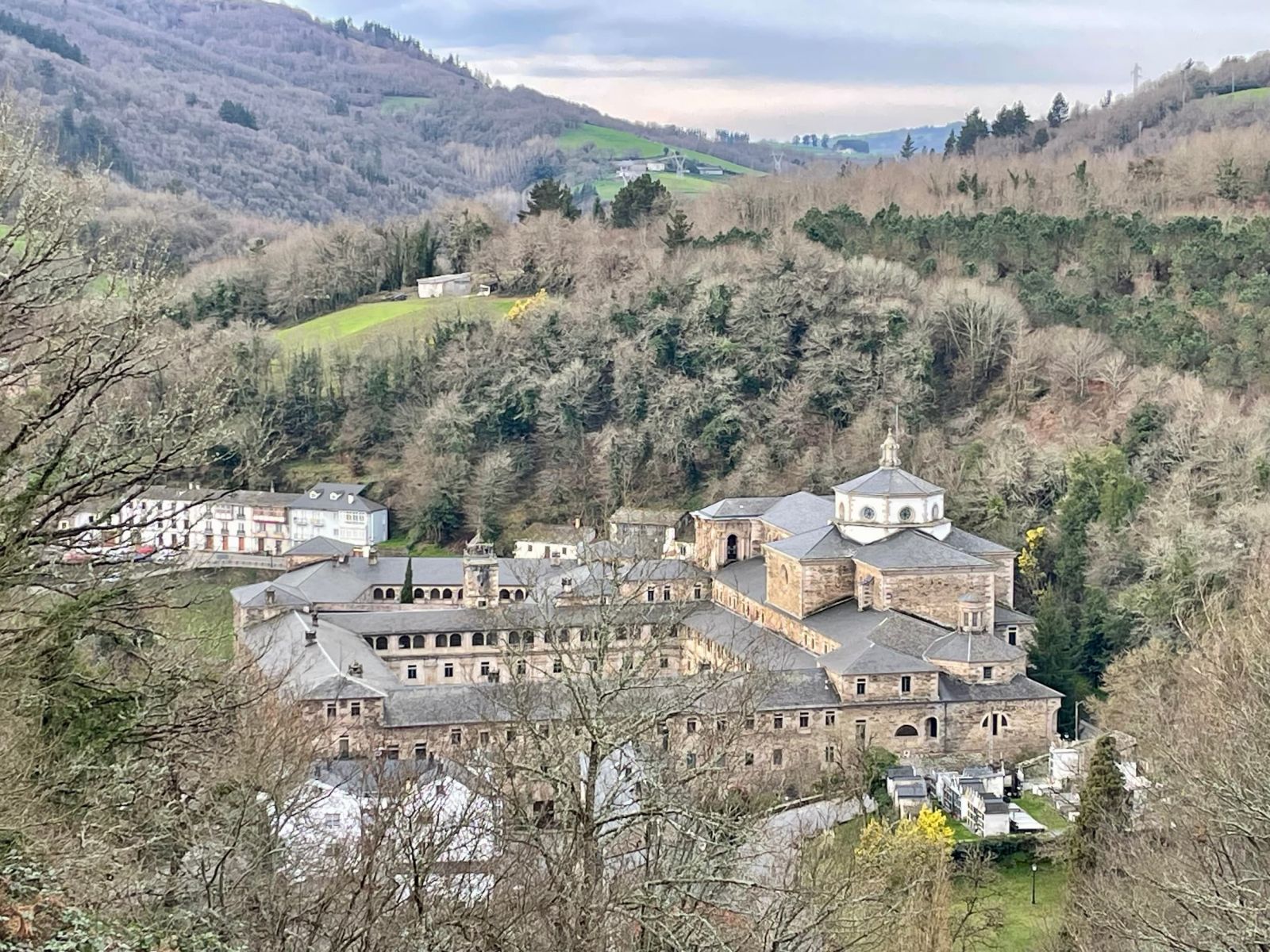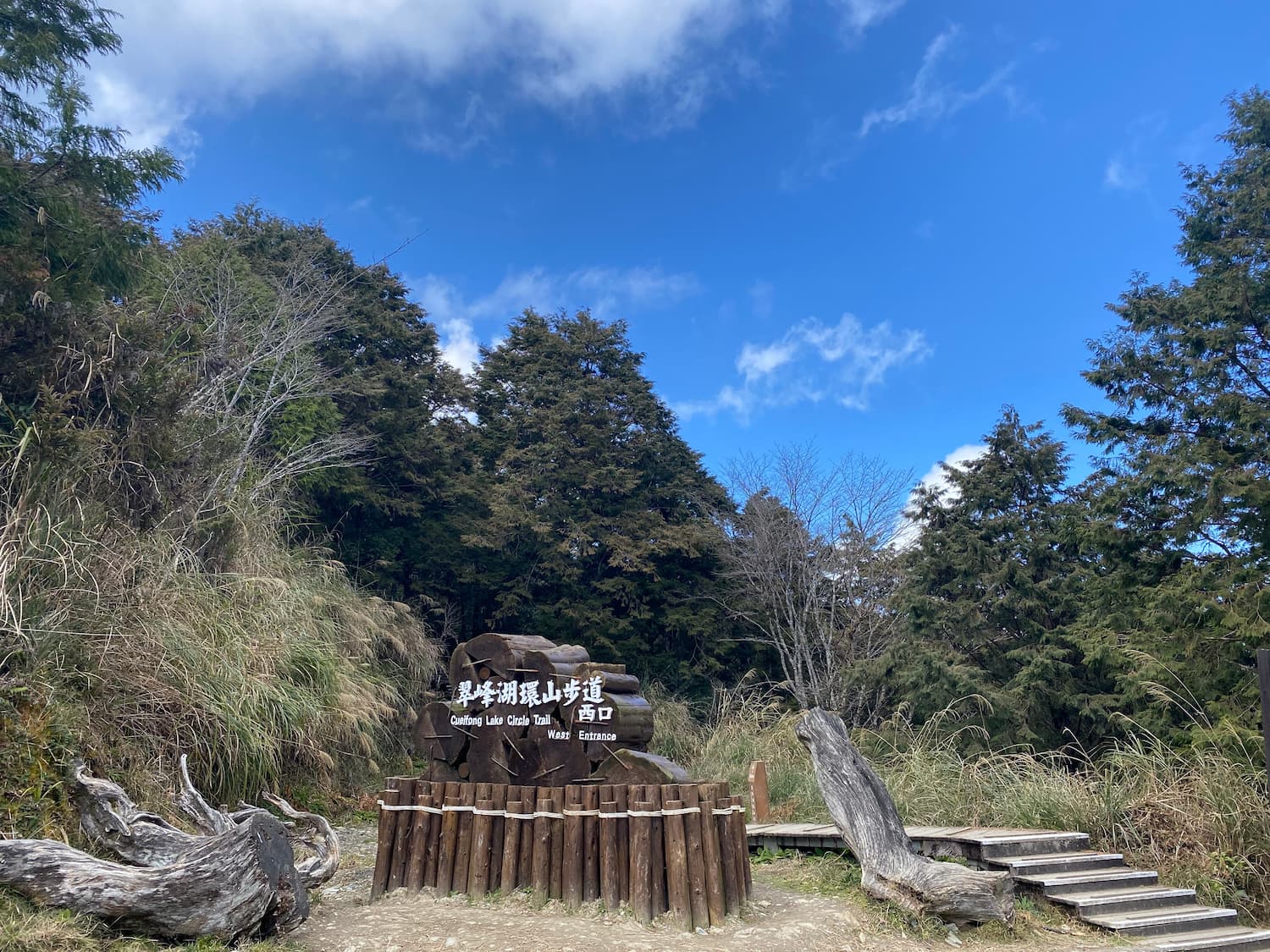Life & Art
The enticing vision of a Taiwan Camino
Given its beautiful scenery, rich culture and warm hospitality, creating a cross-island Camino trail in Taiwan similar to Spain’s Camino de Compostella would attract international travellers looking for an immersive cultural experience and boost Taiwan’s soft power
By Darryl Lupton

En route the Camino de Compostella in Triacastela, Galicia, Spain
Taiwan’s international status requires that it constantly looks for savvy and innovative ways to raise its international profile and win global citizens’ hearts and minds. Without representation in most international forums, Taiwan needs to engage with the international community in ways that can showcase its strengths as a successful de facto country that has a pluralistic society of open-minded citizens who exist in a thriving democracy. This can be achieved through public diplomacy, of which cultural diplomacy is a subset and itself is a manifestation of soft power. Having recently returned to Taiwan from Europe where I experienced walking part of the Camino de Compostella or the ‘Way of St. James’, it struck me that Taiwan could emulate this idea of a pilgrims’ route and leverage this to connect with a wider section of the world community. There is a lot to unpack from this idea, so let’s review the Camino in Spain, other pilgrim routes in the world (and locally), and why and how Taiwan could practically implement this route.

En route the Camino de Compostella in O Cebreiro (1300m), Galicia, Spain
The Camino de Compostella traces its roots as a pilgrim route back to the ninth century and the legend that St. James the Apostle’s remains were buried there. With the Moors controlling most of Spain besides the northernmost sections like Galicia, Christian pilgrims from Europe and locally could show their devotion to the Christian cause and gain personal spiritual merit and redemption by undertaking the pilgrimage to Santiago de Compostello in the north-west of Spain. The history of the Camino has been chequered through history: its medieval golden age was from the eleventh to fourteenth centuries. However, events like the Protestant Reformation and Enlightenment led to a decline in pilgrimages made. It wasn’t until the twentieth century, in fact the 1980s, that a true revival took place and pilgrim numbers started growing significantly with the Camino designated as the first European Cultural Route in 1987. In 2023, close to half a million pilgrims walked the Camino, with the most recent statistic showing that about a third of pilgrims walk for religious reasons with others walking for reasons such as travel and cultural immersion, historical interest, a physical hiking challenge (biking too), and for personal reflection or taking stock of one’s life. The challenge of the Camino enables people to connect in an environment that is completely egalitarian, that is, walking the same overall distance and staying in dormitories and sharing pilgrim meals together. It’s a great leveller and enables one to connect with people from all nations, beliefs, economic or social classes, ages and helps to bind them in a common goal of finishing their Camino, while sharing and helping each other in the process. It’s the United Nations with blisters, good food and wine but without the politics and hollow resolutions.

The Samos Monastery in Galicia is one of the sights along the Camino de Compostella
It is said that the Camino starts from your front door, and actually some pilgrims from Europe take this literally and walk from as far afield as Poland to arrive in Santiago many months later. There are albergues or hostels for pilgrims that run through countries like France, Switzerland, Germany and even Croatia. Yet it is not only in Europe where one can find the chance to walk as a pilgrim. Japan offers opportunities to walk different pilgrim routes that pass by temples, monasteries, shrines and historical sites. The Shikoku Henro Pilgrimage (1200 km) is one of the most famous in Japan and circles the island of Shikoku visiting 88 sacred temples. It is Taiwan’s turn to tap into the potential for pilgrims arriving on its shores. Taiwan’s slogan for attracting tourists is, “Taiwan, touch your heart,” and this is what would happen if international pilgrims were to get a taste of Taiwanese hospitality. Soft power is the art of persuading people to support you through attraction, not coercion or bribes. This is a natural strength that Taiwan possesses – it’s a sincere and heartfelt welcoming to foreigners that consistently wins over visitors to the island. Nevertheless, other parts of Asia are often more popular and attractive as destinations to international tourists, so another strategy to gain visitors and win them over to Taiwan’s natural beauty, inviting society and appealing values, would be a no-brainer.
Does Taiwan already have a pilgrim culture and is it comparable to either the Camino in Europe or Japan’s version? Taiwan does host two Mazu pilgrimages every year, though these Mazu celebrations, in different forms, can stretch from February to May. The highlight is a 400 km roundtrip pilgrimage (Baishatun) lasting around nine days that involves carrying a statue of the Taoist sea goddess in a palanquin on foot. In 2024, this was in mid-March. This pilgrimage has gained in popularity and there were 180,000 pilgrims who attended the Baishatun procession; it’s a time for prayer, reflection and community. It is certainly a festive and at times raucous event that attracts crowds (millions) of locals, though few foreigners. This style of pilgrimage is certainly more communal and intense than what European or Japanese pilgrims are accustomed to. Those visitors to Taiwan looking for a more fervid cultural immersion might participate in this festival or pilgrimage. What’s more, it could serve as a supplementary experience to a more traditional Taiwan-crafted pilgrimage involving more hiking and nature than this west-coast procession. Locals, though fully endorse this pilgrimage as a way to share warmness, kindness and reconnect on a human level after a year of fast-paced business life in a digital environment lacking enough direct human contact.

Could this hiking trail in Taipingshan Ilan County be part of Taiwan’s Camino?
What might appeal more to an international community, is a more traditional Camino-style hike through Taiwan’s stunning mountain and coastal scenery. This would also incorporate temples, monasteries and shrines along the way. There are already hiking routes established through many parts of Taiwan’s rugged mountain areas where Taiwan’s indigenous community live. These Native Taiwanese provide services by means of guides, porters, and providing lodging and transport to trailheads. In Spain, there are so many small villages that depend on Camino pilgrims to sustain them economically. In winter these ‘pueblos’ largely shut down when the paucity of pilgrims makes it economically unviable to provide services. This model could work more favourably in Taiwan and could be a boon to mountain communities that could provide hostel services and provide food for the pilgrims. A whole new economy could be developed to service hikers and with Taiwan’s more temperate climate, most months of the year would be feasible. However, to ascertain a deeper understanding of the possibilities and challenges that a venture of this magnitude would entail – setting up a Taiwan Camino – I interviewed a long-time resident of Taiwan, Twin Ghostlake, who is a keen hiker and published author on hiking in Taiwan. The following information is paraphrased from the interview. He highlights the allure of Taiwan's long-distance trails for international trekkers. The Raknus Selu trail, a creation of the Taiwan Thousand Miles Trail Association (TTMTA), stitches together ancient paths once trodden by Hakka and Aboriginal communities into a continuous trek from Taoyuan County's foothills to Taichung County. This trail weaves through pastoral byways, unpaved roads, and hillside paths. While the trail is manageable within a fortnight, it may not fulfil the yearning for raw wilderness.
In Taiwan, the reality of mid-to-high-altitude hiking is a formidable challenge due to the demanding trail conditions and intricate planning required. Local hikers, restricted to weekends or extended holidays, often opt for short, peak-focused excursions, which has stunted the growth of a thru-hiking culture. Although less frequented, interconnected routes spanning multiple mountain ranges exist, but they demand significant time and resources, including hiring porters for logistical support. It would require government and/or county financial support to build the necessary infrastructure like lodges or hostels where practically and ecologically possible.
Despite the existence of a renowned Central Mountain Range trail, it remains a rarity as a complete thru-hike. There's no consensus on a definitive mid-altitude trail. Some international adventurers, guided by online communities like the Taipei Hikers Facebook group, have embarked on island-length hikes. For instance, German mountaineer Julio successfully navigated a south-to-north trail, blending coastal paths, highways, and various local routes. This endorses the attainability of an island-length thru-hike, yet government funds for infrastructure are needed to make it a reality for the average hiker.
For overseas hikers, tackling any mid or high-altitude trek in Taiwan entails navigating the complex mountain permit system. This notable challenge for foreigners regarding Taiwan's strict permit-based access to National Park trails, contrasts with the more flexible logbook systems elsewhere. With daily hiker limits and mandatory hut reservations, the system aims to mitigate overcrowding in picturesque mountain locales. A compromise could be made by increasing the number of lodges where ecologically possible and finding alternative routes, much the same as the Camino in Spain has a few different paths that end up meeting in Santiago.
Given the harsh mid-altitude conditions, a pragmatic approach could be to undertake a series of distinct hikes rather than a single grand journey. This could encompass ascents of iconic peaks like Jade and Snow Mountains, which require permits, or permit-free climbs of lesser-known summits like the Seven Heroes in Guguan, Taichung County. The TTMTA's website showcases additional long-distance projects under the National Greenway System. Currently, thorough research and planning are essential for a rewarding hiking experience in Taiwan; however, national and county cooperation and funds (previously focused on local demands) could facilitate an easier and less arduous hiking experience for hikers seeking a ‘Taiwan Camino’ experience. Twin Ghostlake is confident that with some timely improvements, Taiwan will be ready to join the list of premier hiking destinations.
In the same way that Croatia has been steadily improving its Camino hiking infrastructure, Taiwan too needs to funnel money, expertise and training to upgrade facilities and services on this potential north-south Camino-style route. Lodges, hostels, paths with decent markings, food or meal options, improving eco-toilets and emphasis on ‘leaving no trace’ are essentials that would need attention and resources. Addressing these would ensure that Taiwan can be a top-tier hiking destination that attracts pilgrims seeking a hiking challenge that would also immerse one in indigenous and Taiwanese culture as well as encountering Buddhist and Taoist shrines and temples along the way. In a similar vein, cycling around Taiwan by bicycle has become increasingly popular and caught the imagination of locals. A hiking route that traverses the tobacco-shaped island may well inspire, resulting in a local-foreigner mix that enhances the experience for all.
The world has recently been focused on Taiwan, especially since Nancy Pelosi visited Taiwan in August 2022. This angered Beijing and has resulted in military responses from the PRC and an escalation in direct threats that undermine Taiwan’s security. Can Taiwan’s ‘silicon shield’ protect it indefinitely from the PLA’s ever-encroaching ‘military exercises?’ Hard power is what potential aggressors understand most clearly. Taiwan has a ‘porcupine strategy’ to dissuade an attack from China but soft power is another powerful force to employ in tandem with military hardware. The more people that Taiwan is able to win over through soft power by utilising cultural diplomacy, means that citizens of countries who have had direct contact with Taiwan will insist that their governments pressure Beijing not to act unwisely and invade Taiwan. Welcoming a new batch of tourists who wish for a hiking and cultural experience, à la ‘Taiwan Camino’, will add another string to Taiwan’s diplomatic bow and help to safeguard a nation’s right to self-determination.
Dr Darryl Lupton is an Australian academic who was a 2023 Taiwan Ministry of Foreign Affairs’ research scholar affiliated with National Taiwan University.